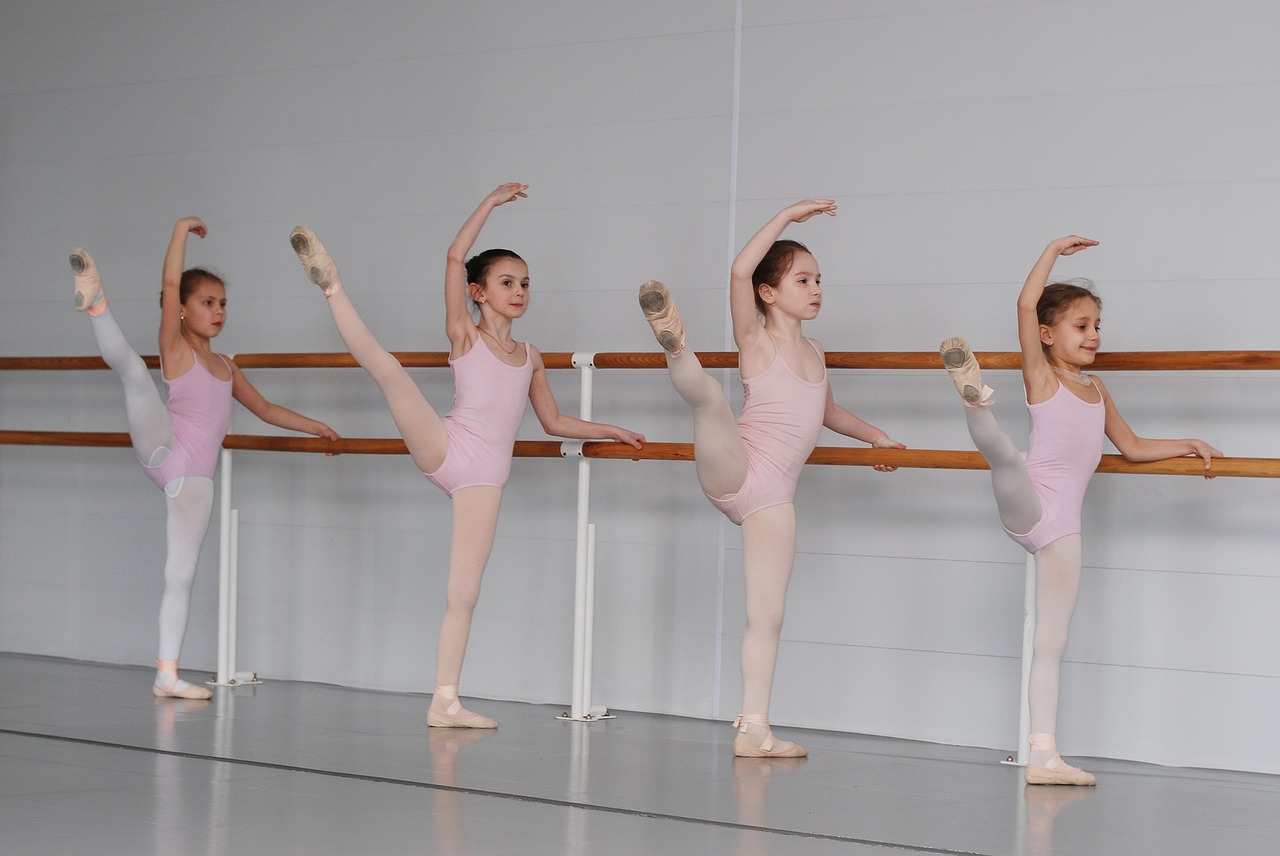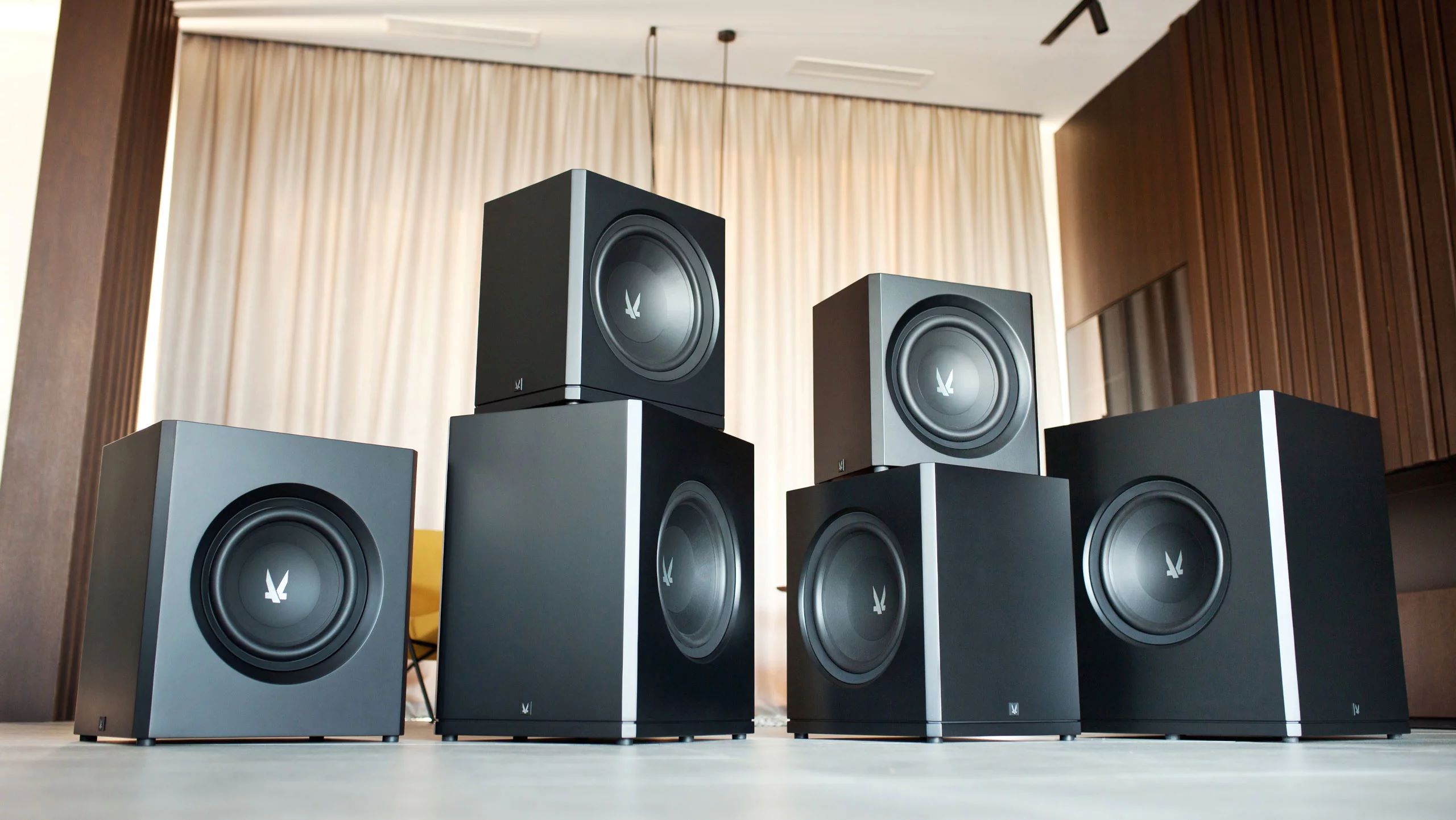Home>Events & Info>Ballet>How Tall Should A Ballet Barre Be


Ballet
How Tall Should A Ballet Barre Be
Modified: January 22, 2024
Discover the ideal height for a ballet barre and learn how to set it up correctly. Improve your ballet practice with the right barre height.
(Many of the links in this article redirect to a specific reviewed product. Your purchase of these products through affiliate links helps to generate commission for AudioLover.com, at no extra cost. Learn more)
Table of Contents
- Introduction
- Importance of the correct height for ballet barre
- Factors to consider when determining the height of a ballet barre
- Standard guidelines for ballet barre height
- Adjusting the ballet barre height for different ages and levels
- Potential risks and injuries associated with incorrect barre height
- Tips for finding the ideal ballet barre height
- Conclusion
Introduction
Ballet, with its graceful movements and precision, requires a proper setup to ensure dancers can perform their best. One essential element of a ballet studio is the ballet barre, a horizontal support used for balance and alignment during various exercises. However, the correct height of the ballet barre is often overlooked or misunderstood. It is crucial to understand the importance of the correct height for a ballet barre to optimize the training experience and prevent potential injuries.
The height of the ballet barre plays a significant role in maintaining proper posture and alignment while performing ballet movements. It provides stability and support for dancers during warm-up exercises, barre work, and stretching routines. A barre that is too high or too low can hinder the execution of movements and disrupt the dancer’s balance, leading to poor technique and potential injuries.
Determining the optimal height for a ballet barre depends on various factors, including the dancer’s height, age, and level of training. A barre that is suitable for a professional dancer may not be the right height for a beginner or a child. It is essential to have a standardized guideline for ballet barre height to ensure consistency and safety across all levels of dance training.
Importance of the correct height for ballet barre
The correct height of a ballet barre is vital for dancers to maintain proper alignment, balance, and form during their training. Here are some key reasons why achieving the correct height is crucial:
- Posture and Alignment: A well-positioned ballet barre allows dancers to align their bodies correctly, from the head to the toes. It promotes the lengthening of the spine, proper turnout of the hips and feet, and a balanced distribution of weight between the legs. This alignment is essential for executing ballet movements with grace and precision.
- Stability and Support: The ballet barre serves as a stabilizing tool for dancers, especially during exercises performed on one leg. It provides support to help maintain balance and control while executing challenging movements. A barre that is too high or too low can disrupt this stability, making it difficult for dancers to perform movements safely.
- Proper Muscle Engagement: When the ballet barre is set at the correct height, dancers can engage the relevant muscles effectively. This includes activating the core, glutes, thighs, and calves to support and control movements. Improper barre height can lead to compensations or incorrect muscle engagement, which can hinder progress and increase the risk of strain or injury.
- Progression and Technique: As dancers progress in their training, the barre height may need to be adjusted to challenge them further and enhance their technique. Gradually increasing the height can encourage dancers to develop strength, flexibility, and control. Conversely, lowering the barre height can be beneficial for beginners or those focusing on refining their technique.
- Injury Prevention: Using the correct barre height helps minimize the risk of injuries. A barre that is too high can cause excessive strain on the muscles and joints, leading to overuse injuries. Conversely, a barre that is too low can lead to poor posture, compromised alignment, and potential falls. By maintaining the correct barre height, dancers can reduce the risk of common ballet-related injuries.
Understanding the importance of the correct height for a ballet barre emphasizes the significance of this seemingly simple fixture in a dance studio. It not only contributes to the technical development of dancers but also plays a crucial role in their physical well-being and overall dance experience.
Factors to consider when determining the height of a ballet barre
Several factors should be taken into account when determining the height of a ballet barre. These factors include:
- Dancer’s Height: The height of the dancer is a primary consideration when setting the barre height. Taller dancers may require a higher barre to accommodate their longer limbs and maintain proper alignment. Shorter dancers, on the other hand, would benefit from a lower barre that allows them to comfortably reach and engage their muscles without compromising their form.
- Age and Level of Training: The age and level of training also play a role in determining the barre height. Young children or beginners may need a lower barre to ensure accessibility and to build a strong foundation in the basics of ballet technique. As dancers progress in their training, they may benefit from a higher barre to challenge their skills and promote further development.
- Physical Limitations: Consider any physical limitations or injuries that dancers may have. Adjustments to the barre height may be necessary to accommodate specific needs and ensure the safety and comfort of the dancer. It is crucial to consult with the dancer or their instructor to determine the most appropriate barre height in such cases.
- Style of Ballet: Different styles of ballet may have varying requirements for barre height. For example, classical ballet training typically follows standard guidelines, while contemporary ballet or other dance styles may have different preferences. Understanding the style being practiced can guide the decision-making process for setting the barre height.
- Personal Preferences: Lastly, personal preferences and comfort should also be considered. While there are recommended guidelines for barre height, each dancer may have unique preferences based on their body proportions, flexibility, and personal experience. It is essential to find a balance between adhering to standard guidelines and catering to individual needs.
By considering these factors, dance instructors and studio owners can establish a comprehensive approach to determining the ideal barre height for their dancers. It allows for personalized modifications that cater to individual dancers’ needs while maintaining the fundamental principles of ballet.
Standard guidelines for ballet barre height
While the ideal barre height can vary based on individual factors, there are some standard guidelines that can serve as a starting point in most ballet studios. These guidelines help maintain consistency and promote proper alignment and technique. The following are the typical recommendations for ballet barre height:
- Mid-Rib Height: The barre should generally be positioned at around mid-rib height. This allows dancers to comfortably rest their hands on the barre while maintaining proper alignment and posture. The exact height may vary slightly based on individual dancer’s height and body proportions.
- Elbow Height: Another common guideline is to adjust the barre height to be at or slightly below the dancer’s elbow height when their arms are extended comfortably. This ensures that the arms are not excessively elevated or dropped, maintaining a balanced and aligned upper body.
- Hand Placement: When dancers hold onto the barre, their hands should be aligned with their shoulders. This hand placement promotes proper upper body alignment while providing the necessary stability and support during exercises.
- Parallel to the Floor: The ballet barre should be positioned parallel to the floor. This allows dancers to maintain proper wrist alignment and avoid strain on their wrists and arms. A level barre also enables consistent technique and muscle engagement during various exercises.
- Adjustability: It is important to note that ballet barres often come with height-adjustable features. This allows flexibility in meeting the needs of different dancers and adjusting the barre height as they progress in their training.
It is crucial to emphasize that these guidelines serve as a starting point and may require adjustments based on the dancers’ specific requirements. Dance instructors and studio owners should closely observe their dancers and make adjustments to ensure optimal alignment, comfort, and progression.
By adhering to these standard guidelines, ballet studios can provide dancers with a consistent and safe training environment that optimizes their technique and reduces the risk of injuries. It is, however, important to remain flexible and be open to modifications based on individual needs and circumstances.
Adjusting the ballet barre height for different ages and levels
When it comes to ballet training, the height of the ballet barre should be adjusted to meet the specific needs of different ages and levels. Here are some considerations for adjusting the barre height:
- Youth and Beginner Dancers: Young children and beginners may require a lower barre height to accommodate their smaller size and shorter limbs. This allows them to comfortably reach the barre while maintaining proper alignment during exercises. A lower barre also promotes accessibility and encourages the development of basic technique and strength.
- Intermediate Dancers: As dancers progress to an intermediate level, the barre height may be gradually increased to further challenge their technique and encourage increased flexibility and strength. This adjustment helps prepare them for more advanced movements and adds complexity to their training.
- Advanced and Professional Dancers: Advanced and professional dancers often benefit from a higher barre height to accommodate their longer limbs and to challenge their technique and control. A higher barre challenges their balance and allows for deeper stretches and more advanced movements while maintaining proper alignment.
- Modifications for Physical Limitations: Dancers with physical limitations or injuries may require customized modifications to the barre height. This ensures their safety and allows them to fully engage in their training. In such cases, working closely with a dance instructor or physical therapist can help determine the most appropriate barre height and modifications.
It is important for dance instructors to assess each dancer individually and make adjustments accordingly. Observation of the dancer’s technique, posture, and alignment can guide the decision-making process in adjusting the barre height. Additionally, open communication with the dancers themselves is key to understanding their comfort levels and any specific needs they may have.
By tailoring the barre height to suit the different ages and levels of dancers, studios can provide an environment that supports both the development and progression of aspiring ballerinas. It ensures that each dancer can access the barre comfortably and effectively, promoting proper technique and reducing the risk of injuries.
Potential risks and injuries associated with incorrect barre height
Using an incorrect barre height during ballet training can pose various risks to dancers and increase the likelihood of injuries. Here are some potential risks and injuries associated with an incorrect barre height:
- Strained Muscles: When the barre is too high, dancers may have to excessively reach or strain their muscles to maintain contact with the barre. This can lead to muscle strains, particularly in the shoulders, arms, and back.
- Poor Alignment: Incorrect barre height can compromise a dancer’s alignment. If the barre is too high, dancers may unintentionally elevate their shoulders, leading to rounded posture and potential strain in the neck and upper back. On the other hand, a barre that is too low can cause drooping or sagging in the torso, negatively impacting alignment and risking strain in the lower back and hips.
- Stability Issues: The stability provided by the barre is crucial for maintaining balance during exercises. If the barre height is not appropriate, dancers may struggle to find stability and may be more prone to falls or loss of balance, increasing the risk of ankle or knee sprains, or even more severe injuries.
- Overuse Injuries: Using an incorrect barre height can place excessive stress on certain muscles, leading to overuse injuries such as tendonitis or stress fractures. For example, a barre that is too high may require excessive use of the shoulder and arm muscles, leading to strains or inflammation.
- Impaired Technique: Incorrect barre height can hinder the execution of proper technique. If the barre is too high, dancers may struggle to maintain turnout or achieve the desired alignment in exercises. This can lead to compensations and inefficient movements, potentially increasing the risk of injury in the long run.
It is crucial to understand the potential risks associated with an incorrect barre height and take the necessary steps to mitigate them. Dance studio owners, instructors, and dancers themselves should prioritize safety, regularly assess and adjust the barre height, and ensure proper technique and alignment during training.
By maintaining the correct barre height, dancers can reduce the risk of these injuries and create a safe and supportive environment for their dance practice, enabling them to fully focus on their artistry and technical growth.
Tips for finding the ideal ballet barre height
Finding the ideal ballet barre height is essential for dancers to optimize their training experience and reduce the risk of injuries. Here are some tips to help find the proper barre height:
- Consult with a Dance Instructor: Seek guidance from a qualified dance instructor who can assess your body proportions, technique, and alignment. They can provide valuable insights and personalized recommendations for your specific needs.
- Start with Standard Guidelines: Begin by using the standard guidelines for barre height, such as positioning it at mid-rib height or around elbow height. These recommendations serve as a solid starting point for most dancers.
- Consider Individual Factors: Take into account your height, age, and level of training. Taller dancers may need a higher barre, while younger or beginner dancers may benefit from a lower barre height. Adjust the barre height accordingly to accommodate these factors.
- Observe and Modify: Pay close attention to your posture, alignment, and comfort as you use the barre. Make necessary modifications if you feel strain in specific muscles or if you’re unable to maintain proper alignment. It is essential to find a balance between challenge and comfort.
- Listen to your Body: Trust your body and listen to its feedback. If you feel unstable, strained, or uncomfortable during exercises, it may indicate an incorrect barre height. Make adjustments to find the position that feels most natural and supportive for your body.
- Gradual Adjustments: When making changes to the barre height, do so gradually. Adjusting the height in small increments allows you to adapt progressively and assess how it affects your technique, stability, and overall comfort.
- Seek Feedback: Regularly seek feedback from your dance instructor or peers. They can provide valuable insights and suggestions based on their observations of your technique and alignment during class. Their feedback can help fine-tune the barre height to meet your specific needs.
Finding the ideal ballet barre height may require some experimentation and adjustments based on individual factors. It is important to remember that the barre height is not set in stone and can be modified as you progress in your training and as your body changes over time.
By actively considering these tips and incorporating feedback from dance professionals, you can find the ideal barre height that supports your technique, alignment, and overall dance experience.
Conclusion
Ensuring the correct height for a ballet barre is essential for dancers to achieve proper alignment, maintain balance, and prevent injuries. By adhering to standard guidelines and considering individual factors such as height, age, and level of training, dance studios can provide a safe and supportive environment for dancers to thrive.
The optimal barre height promotes good posture, engages the relevant muscles effectively, and enables dancers to progress in their training. It allows for the development of technique, flexibility, and control, leading to improved performance and artistry.
Conversely, using an incorrect barre height can lead to strained muscles, compromised alignment, stability issues, overuse injuries, and impaired technique. By understanding the potential risks associated with an incorrect barre height, dance instructors and studio owners can emphasize the importance of proper alignment and provide the necessary adjustments to prevent these risks.
It is crucial for dancers to pay attention to their bodies, seek feedback from instructors, and make gradual adjustments to find the ideal barre height that balances challenge and comfort. Regular assessment and modification of the barre height, as needed, will contribute to a dancer’s progress and ensure a positive training experience.
In conclusion, the height of the ballet barre is not a trivial matter in the realm of ballet training. It is an integral component that supports dancers’ development, helps maintain proper technique, and reduces the risk of injuries. By prioritizing the correct barre height and considering individual needs, dancers can embark on a fulfilling and safe ballet journey, maximizing their potential and achieving their dance aspirations.











